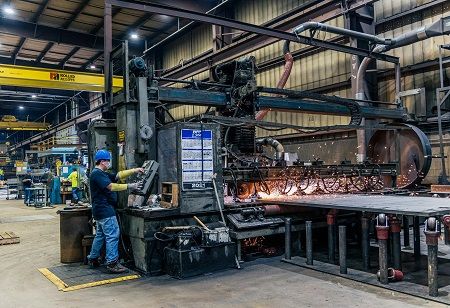
Alloy development is a key area in the field of material science that determines the direction of modern engineering and manufacturing. The latest statistics demonstrate that the alloys are over 90% of industrial materials, which is an evidence to their irreplaceable role in many fields including aerospace and automotive. This strong dependence proves the great significance of the continuous research and innovations in alloy development that has been made possible by the progress in computational materials science, high-throughput experimentation, and nanotechnology. These three areas are so tightly connected that they have totally changed the way of designing, synthesizing and optimizing alloys. This has led to the discovery of new materials with much better properties and performance characteristics.
"Insights from studies of IMCs and intermediate layers formed by diffusion at the Ni/W interface have the potential to significantly improve the effectiveness and longevity of important materials in various fields," - Assistant Professor Minho Oh from Tokyo Institute of Technology.
The leading edge of alloy development is computational materials science, which is a powerful tool that enables researchers to explore the complicated world of atomic and molecular interactions. The methods like density functional theory (DFT) and molecular dynamics simulations allow the scientists to predict the behavior and properties of materials with an amazing accuracy. Through the use of computational models, scientists can find their way through huge chemical spaces, locate possible alloy compositions and adjust processing parameters in a very efficient manner. This computational power is not only fastens the discovery process but also reduces the costs and difficulties of traditional trial-and-error experimentation.
A company which is using computational materials science for alloy development in the automotive industry is General Motors (GM). GM uses the most sophisticated modeling tools and simulations to create and improve alloys for their cars. Using the computer analysis, they can foresee how different alloy compositions will perform and so make lighter and stronger materials that increase fuel efficiency and vehicle safety. Through the use of computational materials science, GM is one step ahead in alloy development and hence they are able to make cars that are innovative and at the same time have enhanced performance and sustainability.
Along with the progress in computational modeling, high-throughput experimentation has become a major part of alloy development which allows for the quick synthesis and screening of many alloy compositions and processing conditions. By means of the combinatorial methods, scientists can create libraries of alloys that cover a wide range of chemical compositions and then they can study their properties in a systematic way. This easy way has already brought a lot of amazing breakthroughs and accelerated the process of finding promising alloy candidates, which is best illustrated by the invention of high-entropy alloys (HEAs). HEAs are a new way of alloy design, which is distinguishable by the fact that they consist of four or more main elements in roughly equal amounts. These multi-component alloys possess a great contribution to the mechanical and thermal properties; hence they are very promising for many applications such as aerospace, energy storage and advanced manufacturing.
Arconic, an aerospace and automotive technology company is an example of how to use high-throughput experimentation (HTE) in alloy development. Arconic uses HTE to quickly test and improve the alloy compositions for different applications. Through the automation of the experimentation process, Arconic can simultaneously test a lot of alloy formulations thus cutting down on development time and costs. In aerospace, Arconic's HTE approach has made it possible to find lightweight but at the same time strong alloys for such critical components as aircraft engine turbines and airframe structures. Through the adjustment of alloy compositions and processing parameters, Arconic provides materials that perfectly fit the needs of aerospace customers who are very demanding in terms of performance. This enables them to increase fuel efficiency, prolong durability and enhance safety in air travel.
In addition to the computational and experimental methods, nanotechnology has become a revolutionary power in alloy development which allows for the exact control of materials at the nanoscale. Nanostructured alloys which include nanocrystalline and amorphous variants have a lot of benefits over their conventional counterparts. Nanocrystalline alloys, which are the ones with very small grain sizes, have better mechanical properties like higher strength and hardness. The beginning of nanotechnology is the new epoch in alloy engineering, where the materials can be designed with an unprecedented accuracy to meet certain performance needs. It does not matter if it is about reinforcing the strength of alloys, increasing their corrosion resistance or improving their thermal conductivity; nanotechnology provides a unique way to control alloy design and functionality.
A case of how nanotechnology has changed the development of alloys is in the work of NanoAl LLC, a company that deals with advanced materials for different industries like aerospace and automotive. NanoAl uses nanotechnology to create alloys with outstanding properties. Through the accurate manipulation of atoms at the nanoscale, they make alloys that have a great strength, durability and corrosion resistance. Their nanotechnology-based alloys have been used by the aerospace manufacturers for such components as turbine blades and structural parts, where high performance and reliability are very important.
All these three directions are closely linked with each other and cannot be separated. These unifying fields have brought about a rebirth of materials engineering, which in turn has led to an era of great innovation and discovery. As the society is now on its way to a sustainable future, research and development must be kept going in order to make use of alloys fully, advance technology and at last but not least bring about economic prosperity.
We use cookies to ensure you get the best experience on our website. Read more...